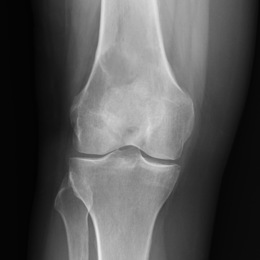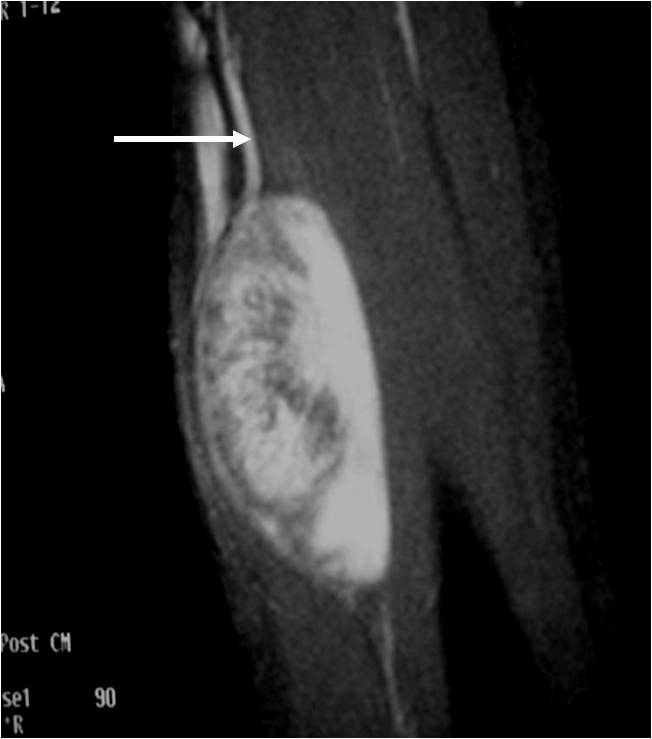What is Undifferentiated Pleomorphic Sarcoma?
Who is usually affected?
- • Most cases are in older adults, ages 50-70 years old, yet can occur in any age.
- • Risk factors include being older than 50 years old and previous radiation therapy.
Signs and Symptoms
- • The most common sign is pain and swelling. Night pain often occurs when at rest.
- • Patients may also experience a fracture through the bone because the tumor weakened the bone.
Causes
- • There is no clear cause of UPS.
Common Bones Involved
- • More commonly occurs as a soft tissue sarcoma in the muscles of the legs and arms. Most common in the bones around the knee joint, which includes the bottom of the femur and the top of the tibia. The upper part of the humerus near the shoulder is also a common site.
Biological Behavior
- • The disease often grows quickly and spreads to other parts of the body (metastasis) including the lungs.
- • The most common sites for spread are the lungs and other bones.
Diagnosis
- • The work-up often consists of a physical examination, X-rays, CT scans, MRI, and sometimes bone scans are required. CT scans can be used to check for subtle mineralization that may help with the diagnosis
- • CT of the chest is necessary to check for pulmonary metastases. The lungs and other bones are the to most common sites for the tumor to spread.
- • The diagnosis is often confirmed with a biopsy, which means taking a sample of tumor and having it analyzed under a microscope by a pathologist.
Risk to your limbs
UPS is a cancerous aggressive tumors that, if left unchecked, will grow and destroy your normal bone. As the tumor slowly grows, the bone is weakened and you are at an increased risk of breaking the bone due to the tumor (called a pathological fracture). They may also spread to your lungs or other bones.
Radiographic imaging is used to help form a diagnosis. These include X-Ray, MRI, CT and Bone Scans.
An example of an UPS MRI is shown.

Treatment of Undifferentiated Pleomorphic Sarcoma
Treatment is a radical resection surgery with preoperative (neoadjuvant) and postoperative (adjuvant) chemotherapy.
Surgery
Surgical treatment includes wide or radical resections to remove the complete tumor and additional margins. The removal of additional, surrounding margins ensures that the tumor is completely removed and decreases the chances of the tumor coming back.
Chemotherapy
Chemotherapy is a systemic treatment option for some cancers, meaning the chemotherapy drugs travel throughout the body and can kill the cancerous cells that have metastasized, or spread throughout. Chemotherapy is used to treat cancer, control/prevent cancer from spreading, and ease the symptoms related to the cancer. There are various drugs used in chemotherapy, so the combinations of drugs administered and the number of cycles may differ between each person and tumor. Lastly, chemotherapy may be used in conjunction with other treatments, specifically local treatments such as surgery.
Radiation
Radiation is a treatment option for some cancers. Radiation therapy is a localized treatment that utilizes high-energy particles or waves to kill cancerous cells. Because radiation therapy is a localized treatment, it only affects the area in which it is set to target and therefore eliminates the risks of damaging healthy cells throughout the body. Not only is it used to treat cancer, but it can also decrease the chances of the cancer from recurring. Lastly, radiation may be used in conjunction with other treatments, such as surgery or chemotherapy, to treat cancers.






